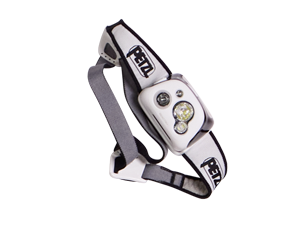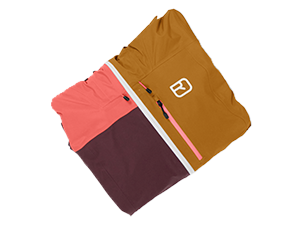BASIC EQUIPMENT FROM HEAD TO TOE
You have to be well-prepared if you’re going on a ski tour. If you want to conquer a mountain on skis and under your own steam, not only should the conditions and terrain be suitable, the equipment must also be appropriate. Ski touring is generally an equipment-intensive sport. Along with the basics (skis, bindings, boots, poles, climbing skins), no ski tour should be undertaken without emergency equipment (avalanche transceiver, shovel, probe). In addition you’ll need a suitable backpack and functional clothing for every scenario – ascents, descents, in sun and snowfall, in spring firn and in new midwinter snow. And of course, there’s still additional equipment that you’ll need to get you to your destination surely and safely. Here you will find information on everything you’ll need for a complete set of ski touring equipment.
The equipment you’ll need for a ski tour is determined by the type, length, difficulty and conditions of the tour, among other things. But no matter how and where you’re touring, the following basic equipment is always needed when making an ascent on skis: touring skis and bindings, climbing skins, touring ski boots, touring poles and a backpack. A helmet and ski crampons are also always recommended.

Standard emergency equipment comprises an avalanche transceiver, avalanche shovel and avalanche probe, and must be taken with you on all off-piste ski tours. In an emergency, only these items will help you quickly help burial victims, or help you yourself be found and rescued. And there are a couple more essential things that should always be in your ski touring backpack.

The clothing you require for ski touring depends, firstly, on the length and type of tour and, secondly, on the time of year, how high you’re going and the current weather conditions. Personal factors also play a role, e.g. how easily you sweat or whether you feel the cold quickly. A tried and tested method is the “onion” principle: Instead of wearing just a single, thick layer of clothing, you wear a number of thinner layers on top of each other: functional merino underwear, a warming insulating layer (fleece, SWISSWOOL jacket) and a wind- and weatherproof layer (softshell or hardshell). This enables you to react to changes in the weather quickly and flexibly, and adapt your clothing to the various phases of your ski tour. Your body gets warm on the ascent – this is where a breathable insulated jacket will usually suffice as the outer layer. When skiing downhill, the headwind will require you to have an additional protective layer such as a softshell or hardshell at hand. Gloves, headwear and a change of shirt will complete your outfit.




































